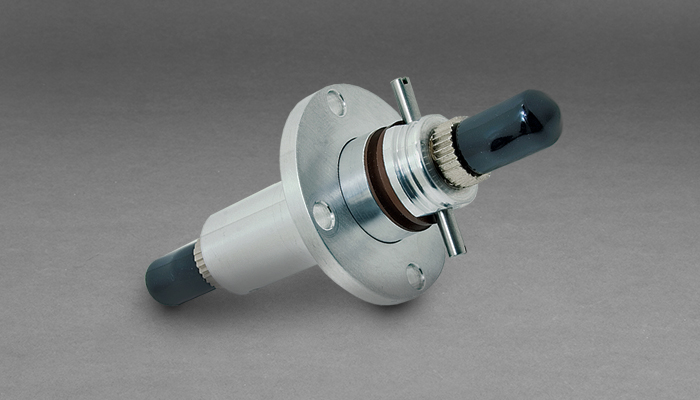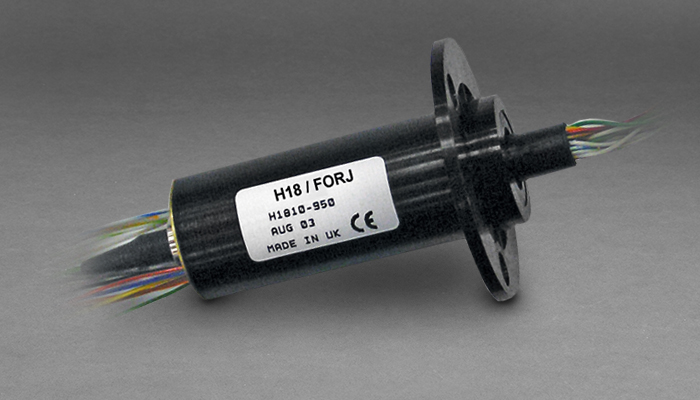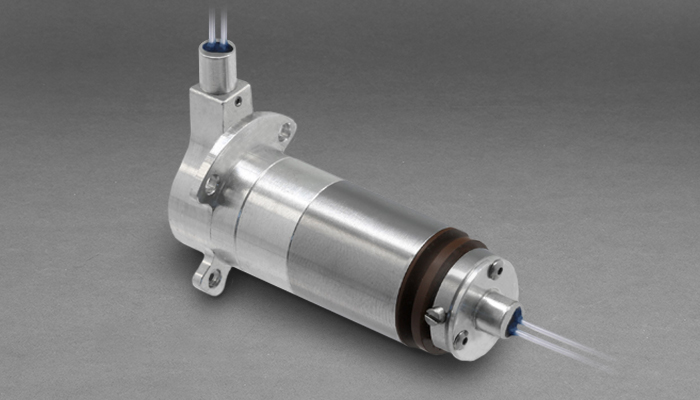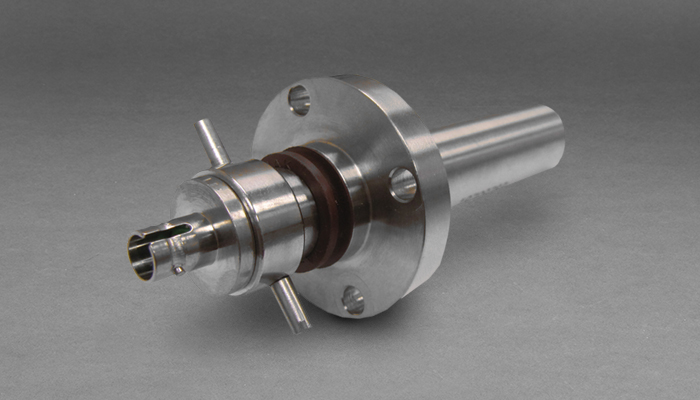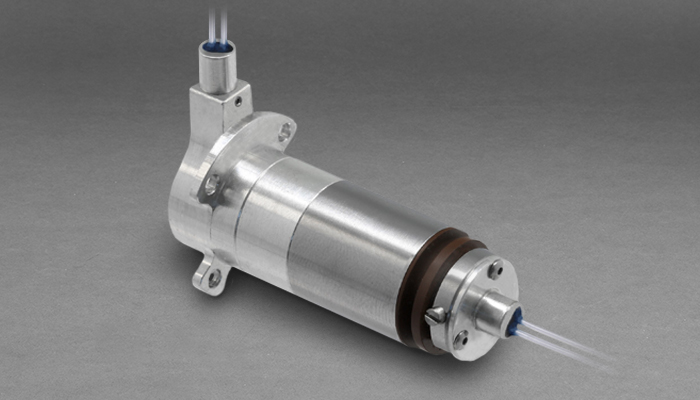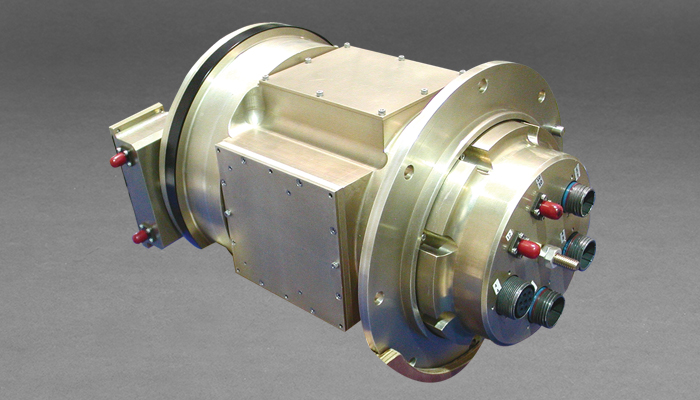Fiber Optic Rotary Joints
Single or Multi-Channel
FORJs are available in single and multi-channel options. The most cost and size efficient options are the single and dual channel designs. If more than two fibers are present in a system, multiplexing solutions are available to combine multiple channels onto one or two fibers to allow the use of a one or two channel FORJ.
In cases where more than two fibers are required, Moog has three designs: the FO190, FO242 and FO291 where single channel modules are stacked to achieve the desired number of channels. The FO300 uses a common de-rotating optical element for all fiber channels.
Singlemode or Multimode
Singlemode fibers allow the propagation of a single mode of optical energy due to their small core size and small numerical aperture and for this reason they exhibit very high bandwidths at wavelengths between 1,270 nm and 1,650 nm. Because of these smaller core sizes and numerical aperture, singlemode FORJs must be designed with very precise mechanical alignments. The alignment requirements are dependent on the operating wavelength of the FORJ. Standard singlemode FORJs are constructed for operation at 1,310 nm and 1,550 nm wavelengths. These FORJs can be expected to perform to the same specifications when used at other wavelengths between 1,270 nm and 1,650 nm, for instance, at coarse wavelength-division multiplexing (CWDM) wavelengths, which include 18 wavelengths of 1,271 nm to 1,611 nm in 20 nm increments. FORJs can be tested at any or all CWDM wavelengths before shipment if desired in order to characterize performance at these wavelengths.
Multimode fibers have large cores and large numerical apertures allowing the propagation of multiple modes of optical energy. These features allow larger amounts of light to be transmitted from sources such as LEDs and VCSELs, but result in higher attenuation and dispersion. Because of these attenuation and dispersion features, multimode fiber systems are typically used for shorter datacom links. Most multimode systems operate at 850 nm and 1,300 nm.
Fiber Optic Rotary Joint Technologies
Resources
Literature
Product Guides
Applications
White Papers
Blog
Learn about the benefits, basic configuration and other fundamentals of slip rings.


